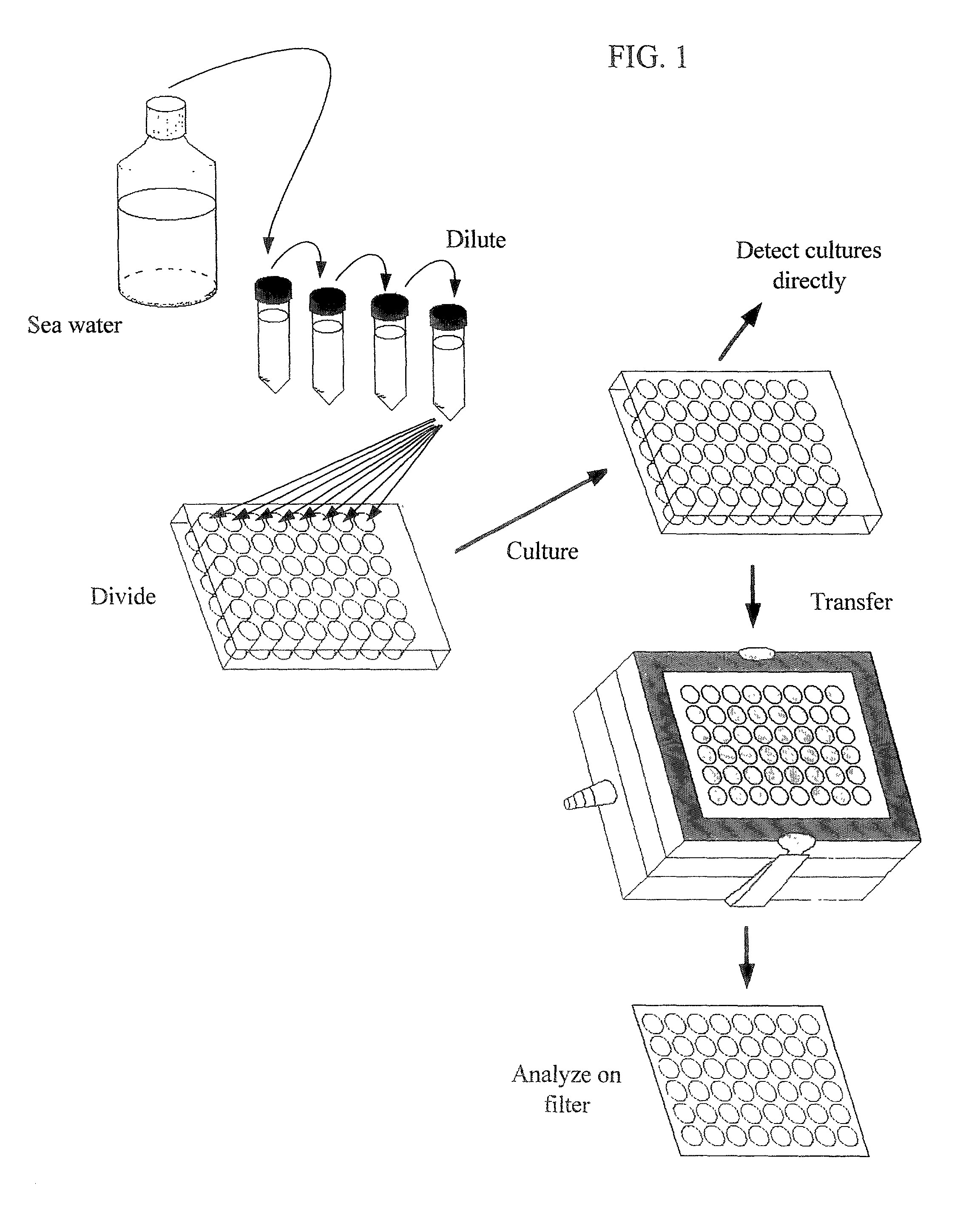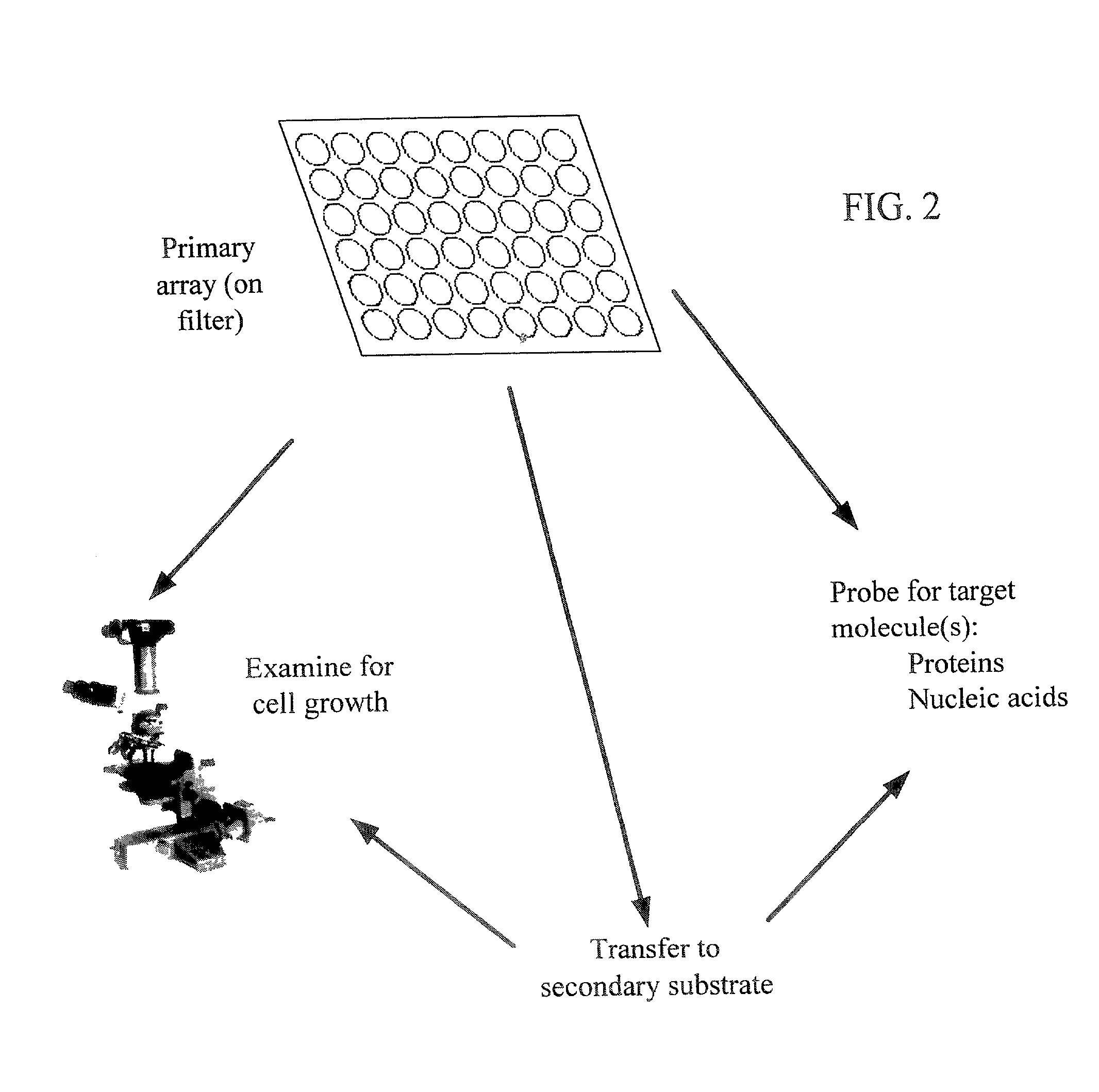High-throughput microbial culturing
- Summary
- Abstract
- Description
- Claims
- Application Information
AI Technical Summary
Benefits of technology
Problems solved by technology
Method used
Image
Examples
example 1
Collection of Samples from Seawater
[0120] Samples of Oregon coastal seawater were taken from the following locations: collected from the jetty in Newport, Oreg.; and collected from a vessel within fifteen miles of the entrance of Newport, Oreg. Samples were preserved prior to culturing by maintaining them at the same temperature as the environment from which they were collected, or a colder temperature. Samples were diluted into microtiter dishes as soon as was feasible in all cases.
example 2
Dilution of Cells into Microtiter Plates
[0121] Cells were DAPI stained and counted using standard fluorescence microscopy to get a count of cells per ml of the original sample. Based upon this calculation, a dilution was made using the desired culture medium (see below) for a final starting culture density of 1 to 10 cells per ml, depending on the application. The dilution was pipetted as 1 ml volumes into non-tissue treated 48-well microtiter plates using a multi-channel pipettor (Labsystems Finnpipette).
example 3
Culturing of Microorganisms
[0122] Microtiter plates filled as discussed above were sealed with Parafilm.TM. to prevent evaporation, and placed in a controlled temperature incubator at 15.degree. C. The cultures were incubated for three weeks in order to permit growth of the microorganisms.
[0123] The culturing medium was made using seawater collected from the Oregon Coast. The seawater was, in the following order: (1) filtered using a Supor 0.2 .mu.m filter, (2) autoclaved, (3) CO.sub.2 sparged for approximately 12 hours, and (4) air sparged for approximately 24 hours. Two hepa filters and one 0.1 .mu.m filter, in series, were used to sterilize the CO.sub.2 and air.
PUM
| Property | Measurement | Unit |
|---|---|---|
| Sheet carrier density | aaaaa | aaaaa |
| Volume | aaaaa | aaaaa |
Abstract
Description
Claims
Application Information
 Login to View More
Login to View More - R&D
- Intellectual Property
- Life Sciences
- Materials
- Tech Scout
- Unparalleled Data Quality
- Higher Quality Content
- 60% Fewer Hallucinations
Browse by: Latest US Patents, China's latest patents, Technical Efficacy Thesaurus, Application Domain, Technology Topic, Popular Technical Reports.
© 2025 PatSnap. All rights reserved.Legal|Privacy policy|Modern Slavery Act Transparency Statement|Sitemap|About US| Contact US: help@patsnap.com


